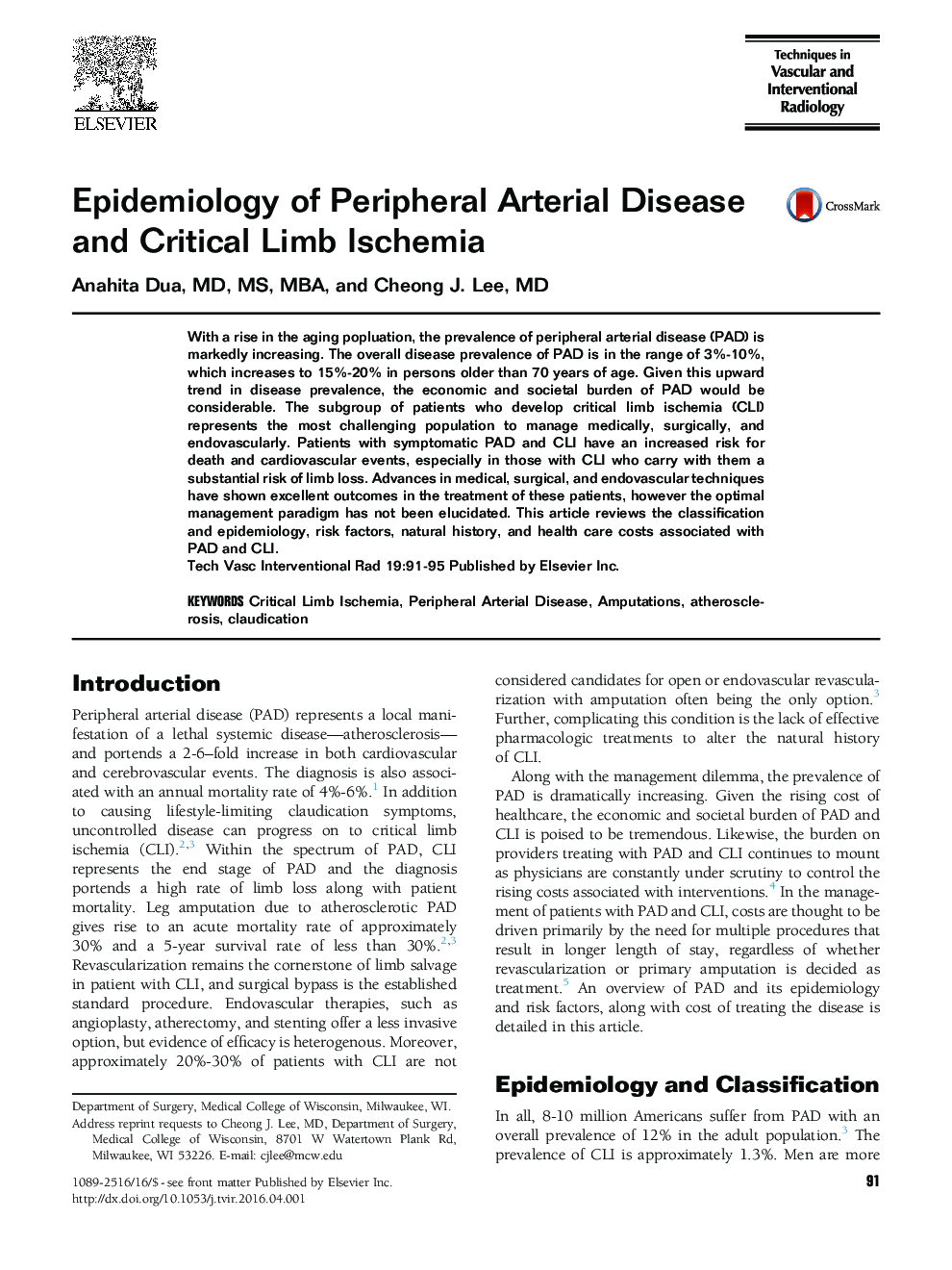| Article ID | Journal | Published Year | Pages | File Type |
|---|---|---|---|---|
| 4251520 | Techniques in Vascular and Interventional Radiology | 2016 | 5 Pages |
With a rise in the aging popluation, the prevalence of peripheral arterial disease (PAD) is markedly increasing. The overall disease prevalence of PAD is in the range of 3%-10%, which increases to 15%-20% in persons older than 70 years of age. Given this upward trend in disease prevalence, the economic and societal burden of PAD would be considerable. The subgroup of patients who develop critical limb ischemia (CLI) represents the most challenging population to manage medically, surgically, and endovascularly. Patients with symptomatic PAD and CLI have an increased risk for death and cardiovascular events, especially in those with CLI who carry with them a substantial risk of limb loss. Advances in medical, surgical, and endovascular techniques have shown excellent outcomes in the treatment of these patients, however the optimal management paradigm has not been elucidated. This article reviews the classification and epidemiology, risk factors, natural history, and health care costs associated with PAD and CLI.
